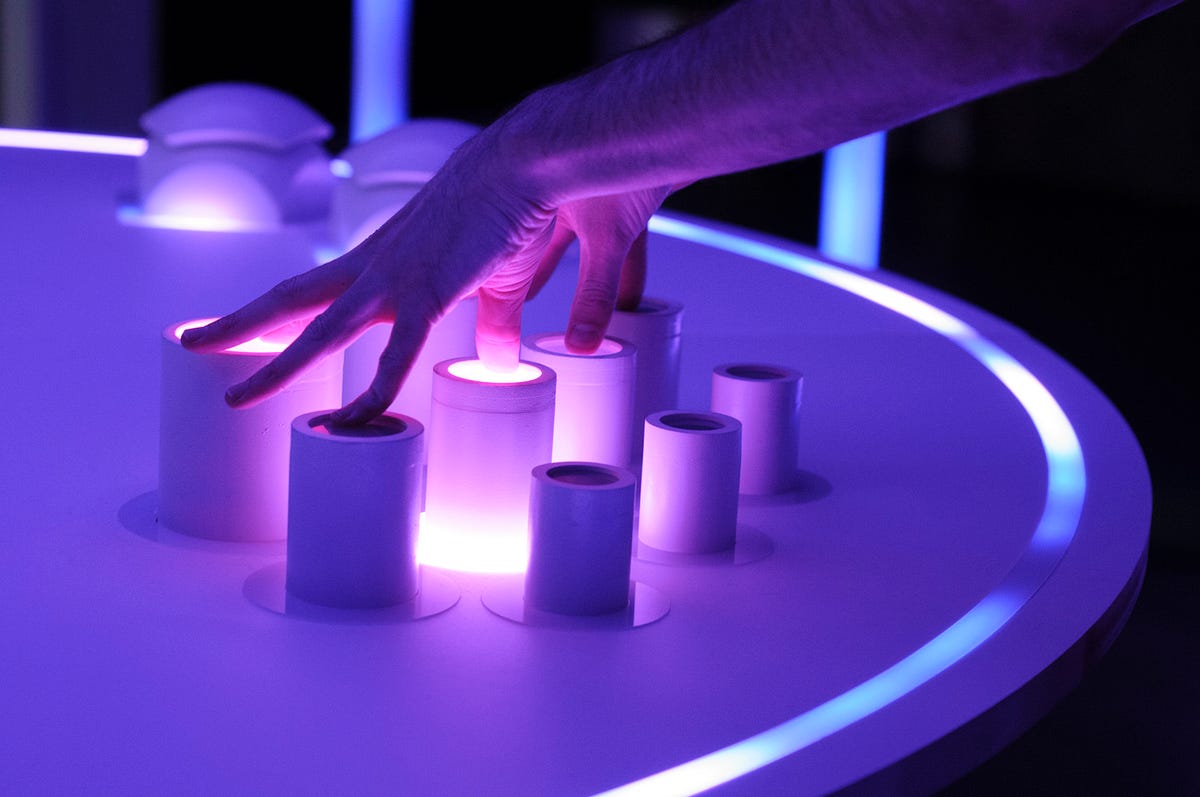The Rise Of Personalized Songs [Cortney Harding]
As tools for audience customization of music become increasingly accessible, (such as the ARC instrument, unveiled at this years SXSW) the line between artist and fan may continue to blur as personalized music becomes the new normal.
____________________________
Guest Post by Cortney Harding on Medium
It had the makings of a typical SXSW scene — a brand-sponsored activation with a buzzy artist (RAC), a vague concept (“Audience Responsive Composition,” or ARC), and a bunch of glowing, cool looking toys for the attractive hordes to fiddle with. But what happened at the Deloitte Digital activation last week could point to a bigger trend that I’ve been covering here and there for months now — the rise of the song not as a static product, but as a living organism and a collaboration between the artist and the audience.
Think of it this way — how many times has a song you like been just a little bit…off? Maybe the tempo was too slow for your run, or too fast for your casual dinner party. Maybe the vocals should just be a little louder, or the drums brought forward. Sure, there are plenty of tools out there to make these changes, but they required at least some knowledge and effort, and for the average consumer, it was easier to just live with an imperfect song or scrap the track and find a new one than to make modifications.
But the concept introduced at the SXSW event is an intriguing one, in part because it was so simple. Audience members just moved knobs and dials — when it was first described to me, my mind immediately went to an old fashioned focus group, with participants swiveling furiously to show their opinions. The crowd wasn’t just giving feedback, though; in a sense they were part of the performance. RAC took the feedback and blended it into his work, responding in real time to the will of the people.

Some artists will surely find this horrifying. Music is supposed to be pure, man, and the only way to do that is to cloister yourself away in a studio in the woods and come out six months later with your masterpiece. And if that’s your vision, then, you do you, and don’t be surprised if fans greet it with a shrug. The fact is, audiences today demand an unprecedented level of intimacy. They want to be part of the process; look at how social media stars open themselves up and engage with their fans to create a two-way relationship. Again, I can already see the comments about “true artists” and “vision” and “disposable content,” so I’ll save you the trouble of typing — that’s not how the world works any more. You don’t have to cater to every fan’s desire, of course, but you do have to bring people in.
One of the things that was so interesting about the event at SXSW was that giving the artist feedback was so easy. Unfortunately, this was probably a one-time event, and even if it happens again, this isn’t something that could scale easily in this form any time soon. But that doesn’t mean that there aren’t other ways to let fans be more hands-on, either creating their own personal mixes of a track or interacting with an artist as they create.
Start with the personalized remixes. There are a few cool apps to create tracks out of samples and plenty of software for creating remixes and remix contest platforms, but none of them are so dead simple that an average person could use them to take a few tracks and make a few modifications for her morning run. There’s something to be created there, or maybe it’s a layer on top of an existing streaming app. Spotify Running is fine, but it’s not perfect and I can’t use it to create a finely-tuned personalized mix just for me. Maybe I want a certain track, at a certain speed, at just the right moment when I know I’m going to hit a wall and want to push through. I could also share the mix, and the artist would still get paid, and if my mix was good enough, maybe they could cut a deal and I could get some credit.

As for collaboration, there are plenty of ways to adapt the lean startup model for music. Constantly releasing content and soliciting feedback is a smart strategy, and one more artists should adopt. It could be as simple as releasing snippets of tracks and asking for comments, or as complicated as building something the ARC setup described above. If the technology takes off, artists could even create special performances where they allow fans to come and manipulate the tracks as the perform — the audience would feel involved and the artist might actually come away with some fresh ideas.
The most looming problem for artists is that at some point, people will just start creating their own content and leave them behind. Pop stars and celebrities perform a bigger social function, so they’ll stick around, but platforms like Looplabs and Jukedeck are allowing users to just make the song they want, and in an age when we expect everything to be personalized and catered to us just so, why deal with a song that we like but don’t love?
If I’ve learned anything, it’s that SXSW isn’t always the most accurate predictor when it comes to big tech trends — RIP Meerkat, we hardly knew ye. But there’s something bigger at work here — the idea that customized experiences will be the new normal, and that artists need to start thinking about how to collaborate with the crowd. ARC won’t be in venues tomorrow, but ten years down the road, those knobs and dials could be in the hands of every fan out there.